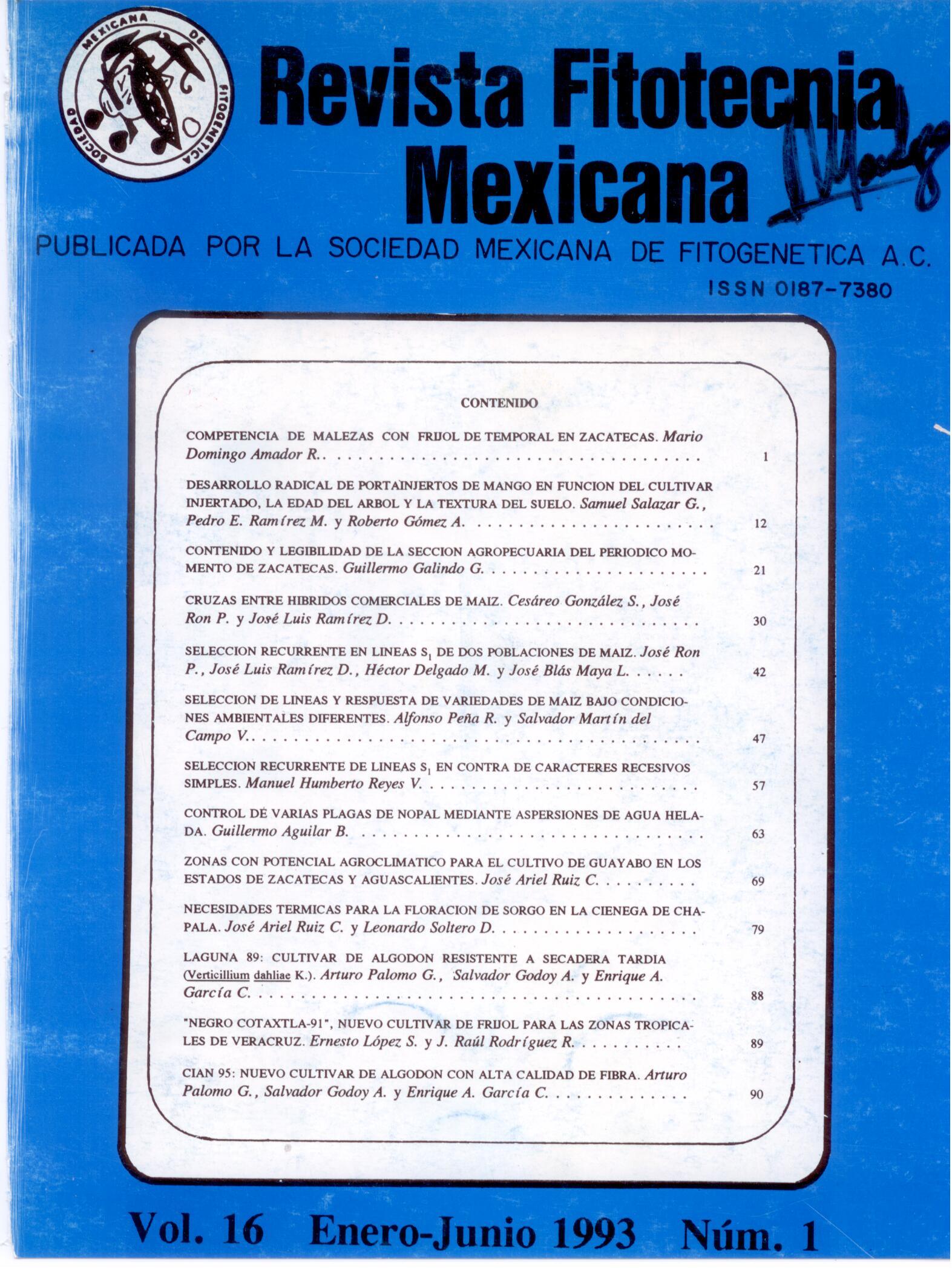"LAGUNA 89" COTION CULTIVAR RESIST ANT TO Verticillium dahliae K.
Main Article Content
Abstract
Verticillium or late drying, whose causal agent is the fungus, Velticillium daliae K., is one of the most important diseases
of cotton cultivation in the Lagunera region. The fungus lives in the soil, penetrates through the roots and is distributed throughout the aerial of the plant. The attacked plants gradually lose their leaves, frames and small acorns, in addition to altering the development process of the acorns that remain on the plant and is reflected in poor quality fiber. In 1989, the losses economic losses caused by this fungus exceeded 2,000 million pesos. The best economic and agronomic method to deal with this disease is the use of cultivars resistant to its attack. In this regard, CIFAP-Comarca Lagunera began In 1975, a genetic improvement project to form cultivars resistant to Verticillium resulted in the "Laguna 89" cultivar. Laguna 89 originated from the cross between the Acala B-3080, Delcot 277 and PD-2165 cultivars. The resistance donor parent was Acala B-3080. The single cross was carried out in the summer of 1975 and the triple cross in the winter of 1975-76, in Iguala, Gro. Using the genealogical method, from 1977 to 1982 the selection process was carried out in soils heavily infested by the fungus. In the segregating generations, the best genotypes were selected based on resistance to fungal damage, desirable agronomic characteristics, yield components and fiber quality. In 1983 the best lines were included in yield and fiber quality tests in both free and pathogen-infested soils. In 1988, after five years of evaluation, it was decided to release line NM-21 under the name Laguna 89. The release became effective in 1990. Laguna 89 is a cultivar that can be planted either in free or Verticillium-infested soils. In infested soils Laguna 89 yields 35% more stone cotton and 31% more feather cotton than the commercial cultivar Deltapine 80. In disease-free soils the former yields 10% more than the latter. The fiber quality of Laguna 89 is far superior to the quality of commercial cultivars grown in Mexico. Laguna 89 fiber has a length of 11/8 inches, a strength of 85,000 pounds per square inch, and a thickness (fineness) of 4.3 micronaires. Laguna 89 is a semi-early cultivar with a growth cycle 7 to 10 days shorter than that of Deltapine 80. Laguna 89 has shorter fruiting branches than the branches of the varieties commonly planted in the region; Its leaves are small and its height can fluctuate between 77 and 135 centimeters, depending on management, environmental conditions and quality of the soil where it is planted. This cultivar was registered in the National Registry of Plant Varieties with the number ALG-22-271189.

